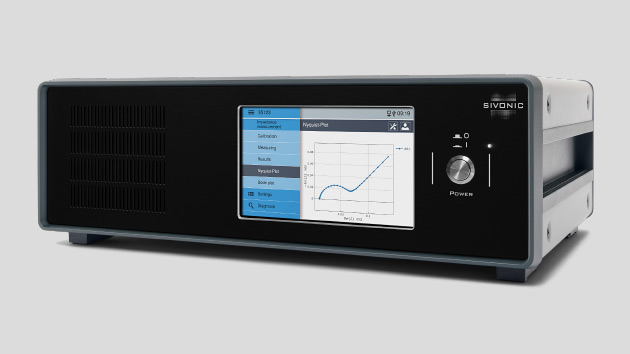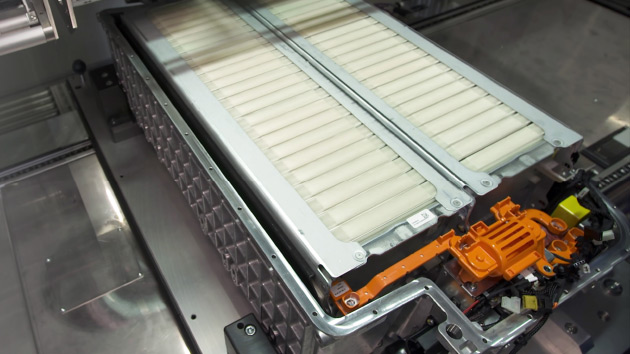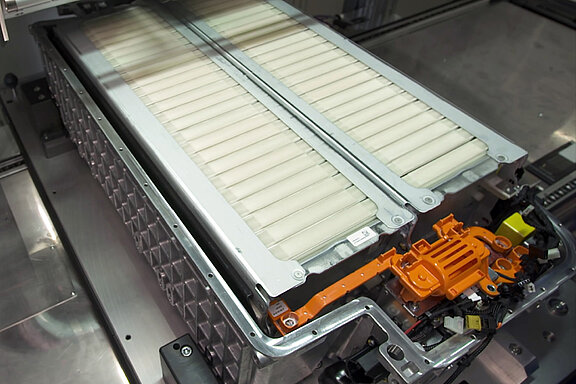Electrochemical impedance spectroscopy EIS is an excellent technique to investigate the electrical and electrochemical properties of components. Electrochemical impedance spectroscopy works non-invasively and allows the evaluation of components during operation under different load conditions or current stresses.
DUTs with large electrochemically active areas and thus with low impedances present a particular challenge. Due to the low impedances, no potentiostat can be used but a galvanostat. This means that the test specimen is not excited (modulated) with a sinusoidal voltage but with a sinusoidal current. The resulting voltage is measured with amplitude and phase over a larger frequency range.
The EIS-Meter allows modulation currents up to ±50A. This allows impedance spectra to be measured in the microohm [µΩ] , milliohm [mΩ] and ohm [Ω] range.



![Fuel Cell [Translate to Englisch:]](/fileadmin/_processed_/e/2/csm_img_Vorschau_Applikationen_Brennstoffzellen_5c9d48bd57.jpg)

![Electrolysis [Translate to Englisch:]](/fileadmin/_processed_/c/5/csm_img_Vorschau_Applikationen_Elektrolyse_010bb10ebc.jpg)
![Corrosion [Translate to Englisch:]](/fileadmin/_processed_/b/0/csm_img_Vorschau_Applikationen_Korrosion_1a39355e33.jpg)
